#pharmatech
Text
youtube
Discover the Advantages of High-Speed Single Rotary Tablet Press! Faster production, consistent quality, and efficient performance. Perfect for your tablet manufacturing needs!
watch our video on - https://www.youtube.com/watch?v=HifW5N2q-g4
0 notes
Text
Clean Room Air Filter Market: Driving Forces, Challenges, and Future Prospects | GQ Research
The Clean Room Air Filter market is set to witness remarkable growth, as indicated by recent market analysis conducted by GQ Research. In 2023, the global Clean Room Air Filter market showcased a significant presence, boasting a valuation of US$ 672.32 million. This underscores the substantial demand for Clean Room Air Filter technology and its widespread adoption across various industries.
Get Sample of this Report at: https://gqresearch.com/request-sample/global-clean-room-air-filter-market/

Projected Growth: Projections suggest that the Clean Room Air Filter market will continue its upward trajectory, with a projected value of US$ 958.71 million by 2030. This growth is expected to be driven by technological advancements, increasing consumer demand, and expanding application areas.
Compound Annual Growth Rate (CAGR): The forecast period anticipates a Compound Annual Growth Rate (CAGR) of 5.2%, reflecting a steady and robust growth rate for the Clean Room Air Filter market over the coming years.
Technology Adoption
Clean room air filters are integral to maintaining the stringent environmental conditions required in various high-tech industries. The adoption of advanced filtration technologies, such as High-Efficiency Particulate Air (HEPA) and Ultra-Low Penetration Air (ULPA) filters, has been widespread due to their superior ability to capture submicron particles. With the increasing demand for ultra-clean environments, industries like pharmaceuticals, biotechnology, and semiconductor manufacturing are rapidly adopting these technologies.
Application Diversity:
The clean room air filter market caters to a wide range of applications across various industries, including pharmaceuticals, biotechnology, electronics, and food and beverage manufacturing. Each of these sectors requires stringent air quality standards to ensure product integrity and compliance with regulatory requirements. For instance, the pharmaceutical industry relies on HEPA and ULPA filters to maintain sterile environments crucial for drug production. In contrast, the electronics industry uses these filters to prevent contamination during the manufacturing of sensitive components like semiconductors. This diversity in applications drives continuous innovation and specialization in filter technology to meet the specific needs of different industries.
Consumer Preferences:
Consumer preferences in the clean room air filter market are increasingly driven by a demand for high-efficiency and cost-effective solutions. End-users prioritize filters that offer superior performance in terms of particle retention, energy efficiency, and longevity. There is also a growing preference for filters that require minimal maintenance and offer ease of installation. Additionally, as awareness of environmental issues increases, consumers are showing a preference for sustainable and recyclable filter materials. This shift in consumer preferences is pushing manufacturers to develop filters that not only meet high performance standards but also align with environmental sustainability goals.
Technological Advancements:
Technological advancements are playing a pivotal role in the evolution of clean room air filters. Innovations in nanotechnology have led to the development of filters with enhanced particle capture capabilities. Advanced materials, such as synthetic and composite media, are being used to improve filtration efficiency and durability. Smart filtration systems equipped with sensors and IoT capabilities are emerging, allowing for real-time monitoring and maintenance of air quality in clean rooms. These technological advancements are not only improving the performance and reliability of air filters but also reducing operational costs and energy consumption.
Market Competition:
The clean room air filter market is characterized by intense competition among key players, including multinational corporations and regional manufacturers. Companies are investing heavily in research and development to innovate and differentiate their products. Strategic collaborations, mergers, and acquisitions are common as firms seek to expand their market share and enhance their technological capabilities. Competitive pricing, quality assurance, and robust after-sales support are critical factors that influence market dynamics. The competitive landscape is also shaped by the ability of companies to adapt to regulatory changes and emerging industry standards.
Environmental Considerations:
Environmental considerations are increasingly influencing the clean room air filter market. There is a growing emphasis on developing eco-friendly and energy-efficient filtration solutions to reduce the environmental footprint of industrial operations. Manufacturers are exploring the use of biodegradable and recyclable materials in filter production. Additionally, the adoption of energy-efficient filter designs helps lower the overall carbon emissions associated with air filtration systems. Regulatory bodies are also imposing stricter environmental regulations, prompting companies to innovate and comply with these standards. As sustainability becomes a key priority, the market is likely to see a greater focus on green technologies and practices.
Regional Dynamics: Different regions may exhibit varying growth rates and adoption patterns influenced by factors such as consumer preferences, technological infrastructure and regulatory frameworks.
Key players in the industry include:
Atlas Copco AB
Airex Filter Corp
Freudenberg and Co. KG
Camfil AB
CleanAir Solutions Inc
Daesung Industrial Co. Ltd
Dafco Filtration Group
Daikin Industries Ltd. MANN HUMMEL International GmbH and Co. KG
Pall Corporation
Parker Hannifin Corp
TROX GmbH and Others.
The research report provides a comprehensive analysis of the Clean Room Air Filter market, offering insights into current trends, market dynamics and future prospects. It explores key factors driving growth, challenges faced by the industry, and potential opportunities for market players.
For more information and to access a complimentary sample report, visit Link to Sample Report: https://gqresearch.com/request-sample/global-clean-room-air-filter-market/
About GQ Research:
GQ Research is a company that is creating cutting edge, futuristic and informative reports in many different areas. Some of the most common areas where we generate reports are industry reports, country reports, company reports and everything in between.
Contact:
Jessica Joyal
+1 (614) 602 2897 | +919284395731 Website - https://gqresearch.com/
0 notes
Text
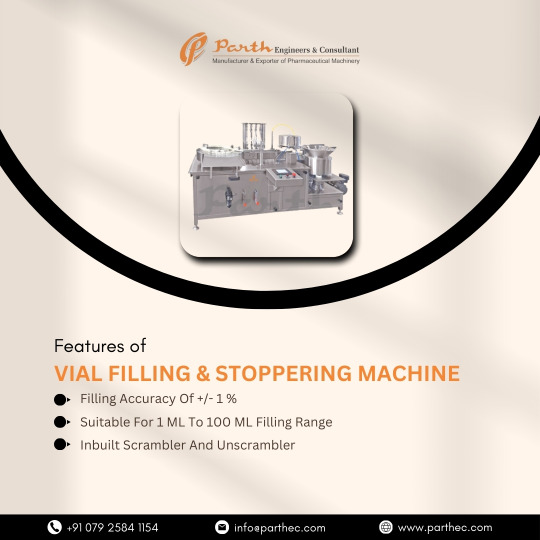
Unveil the features of our Vial Filling and Stoppering Machine: Precision filling ensures accurate dosing, complemented by a reliable stoppering mechanism. With a compact design, it maximizes space efficiency on your production line. Elevate your pharmaceutical processes with seamless vial processing capabilities.
for more details visit at - https://www.parthec.com/product/category/liquid-filling-machine-line
0 notes
Text
Revolutionize pharmaceutical processes with cutting-edge fluid dynamics techniques! Dive into the future of efficiency and innovation. To know more, visit - https://iwakiamerica.com/blog/optimize-pharmaceutical-processes-with-advanced-fluid-dynamics/
0 notes
Text
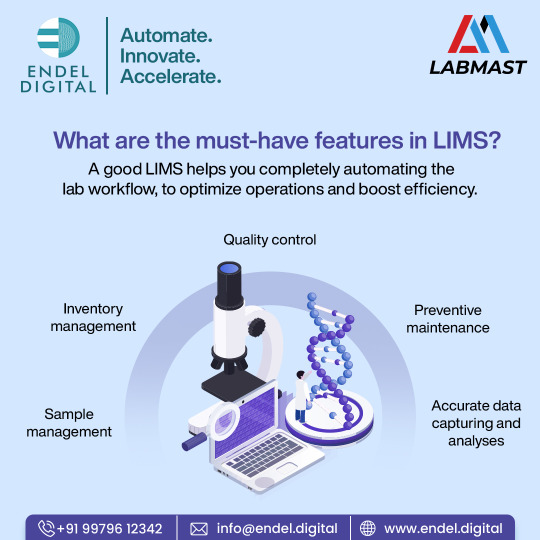
🔬 LIMS: Revolutionizing Pharmaceutical Labs 🧪
Discover how Endel Digital's LabMAST is transforming the pharmaceutical industry. 🌟
🧫 Streamlined Data Management: Say goodbye to paper records and hello to efficient data tracking.
🔍 Data Accuracy: Reduce errors and ensure compliance with precise data collection and storage.
🚀 Accelerated Workflows: Speed up research, development, and quality control processes.
📊 Real-time Insights: Make informed decisions with instant access to lab data and analytics.
🌐 Connectivity: Seamlessly integrate with other lab instruments and systems.
Stay ahead in the pharma world with Endel Digital's LabMAST! 💊
To know more: https://endel.digital/labmast/
#PharmaTech #LabAutomation #LIMS
0 notes
Text
Salesforce CRM Customization for Pharma: Tailoring Analytics to Industry Needs
In the dynamic and highly regulated world of the pharmaceutical industry, efficient customer relationship management (CRM) is paramount. Salesforce, a leading CRM platform, has emerged as a versatile tool that offers pharmaceutical companies the flexibility to customize analytics and insights according to their specific industry requirements. This blog post explores how Salesforce CRM customization transforms the pharmaceutical sector by tailoring analytics to address industry-specific challenges and opportunities.
Write to us at [email protected] to explore how Salesforce CRM customization transforms the pharmaceutical sector by tailoring analytics to address industry-specific challenges and opportunities.
Understanding Salesforce CRM Customization
Salesforce is renowned for its ability to adapt and cater to the unique needs of various market. Customization involves tailoring the platform's features and functionalities to align with an organization's processes, goals, and specific industry regulations. In the pharmaceutical sector, where data accuracy, compliance, and personalized engagement are paramount, customization offers a tailored solution to streamline operations and drive growth.
Key Benefits of Salesforce CRM Customization in Pharma:
Enhanced Data Management: The pharmaceutical industry relies on a multitude of data, ranging from physician interactions to patient information and regulatory compliance data. Customizing Salesforce enables companies to structure data fields, forms, and reports to match their unique data needs. This ensures accurate tracking of interactions and adherence to data privacy regulations like HIPAA.
Compliance Management: The stringent regulations governing the pharmaceutical industry necessitate meticulous compliance management. Customization allows pharmaceutical companies to integrate compliance checks directly into the CRM system, ensuring that interactions with healthcare professionals and patients are in accordance with industry regulations.
Personalized Customer Engagement: Salesforce's customization capabilities enable the creation of tailored communication and engagement strategies. Companies can segment customers based on factors like prescription history, therapy areas, and prescribing patterns, allowing for more personalized interactions and targeted marketing efforts.
Advanced Analytics: Pharmaceuticals thrive on data-driven decisions. Customized analytics dashboards in Salesforce allow companies to track sales trends, monitor product performance, and evaluate the effectiveness of marketing campaigns. Customized reports and visualizations help uncover insights that inform strategic decisions.
Key Opinion Leader (KOL) Management: For pharmaceutical companies, nurturing relationships with key opinion leaders (KOLs) is pivotal. Customized Salesforce functionalities can assist in identifying, engaging, and tracking interactions with KOLs. This streamlines collaboration and maximizes the impact of influential voices.
Regulatory Reporting: Regulatory reporting is a critical aspect of the pharmaceutical sector. Customization in Salesforce can automate the generation of compliance reports and ensure that required information is readily available for audits and regulatory submissions.
Implementing Salesforce CRM Customization for Pharma:
Identify Specific Needs: Prioritize the customization features that align with your pharmaceutical company's goals, whether it's data management, personalized engagement, or compliance enhancement.
Collaborative Customization: Involve cross-functional teams comprising IT, sales, marketing, compliance, and legal departments. Collaboration ensures that customization meets the diverse needs of different stakeholders.
Select Appropriate Tools: Salesforce offers a range of tools and features for customization, including custom objects, fields, workflow automation, and analytical dashboards. Choose the ones that align with your goals.
Data Migration and Integration: If migrating from another CRM or integrating with existing systems, ensure a seamless transfer of data and integration with other tools used in your pharmaceutical operations.
Training and Adoption: Provide comprehensive training to your team on using the customized Salesforce CRM effectively. Adoption is essential for reaping the benefits of customization.
Conclusion
Salesforce CRM customization holds immense potential for revolutionizing how pharmaceutical companies manage customer relationships, data, and compliance. By tailoring analytics and functionalities to the industry's unique challenges and requirements, customization empowers companies to make informed decisions, enhance engagement, and navigate the intricate regulatory landscape. As the pharmaceutical industry continues to evolve, embracing Salesforce CRM customization is a strategic step toward optimizing operations and achieving growth in an increasingly competitive environment.
Visit our website now: https://www.anervea.com/
#SalesforceInPharma#CRMCustomization#PharmaTech#DataDrivenDecisions#HIPAACompliance#PharmaCRM#RegulatoryCompliance#KOLManagement#PersonalizedEngagement#PharmaDataManagement#SalesforceForHealth#AdvancedAnalytics#PharmaCompliance#IndustrySpecificCRM#TailoredPharmaTools#StrategicCRM#NavigatingPharmaRegulations#EfficientPharmaOperations#SalesforceCustomization#OptimizedPharmaGrowth
0 notes
Text
Unlock the potential of the pharmaceutical industry with cloud technology! Learn why top players are leveraging the cloud for enhanced efficiency, security, and innovation
0 notes
Text

🔥 HÀNH ĐỘNG SỚM - TÁC ĐỘNG LỚN
🔥 HÀNH ĐỘNG SỚM - TÁC ĐỘNG LỚN
Để có được:
☑️ Một sức đề kháng cao
☑️ Một cơ thể khỏe mạnh
☑️ Nguồn năng lượng dồi dào mỗi ngày
☑️ Khả năng chống lại bệnh dịch
☑️ Đủ dinh dưỡng để ăn kiêng theo ý thích
☑️ Cải thiện tuổi thọ mỗi ngày
☑️ Một cuộc sống chất lượng
…. là kết quả của những nỗ lực kiên trì trong dinh dưỡng và luyện tập. Ngoài việc thường xuyên vận động, bữa ăn của bạn còn phải dồi dào về chất và đa dạng về lượng để đảm bảo không một vi chất nào bị thiếu hụt.
🍀 Hãy để Multivit Daglig đơn giản hóa gánh nặng trên và giúp bạn đạt được mục tiêu sức khỏe một cách nhanh chóng hơn:
🛡 Multivit Daglig bổ sung 12 loại vitamin và 7 loại khoáng chất thiết yếu. Đặc biệt hàm lượng cao vitamin C, giúp nâng cao sức đề kháng phòng chống dịch bệnh.
🛡 Sử dụng 1 viên Multivit Daglig mỗi ngày, bạn sẽ không phải lo lắng đến việc thiếu hụt vi chất và những hậu quả do thiếu dinh dưỡng gây ra đối với sức khỏe.
=> Hơn thế nữa, quả ngọt bạn đạt được khi sử dụng Multivit Daglig là lâu dài, bền vững và tác động tích cực tới tuổi thọ.
🛒 Đặt hàng ngay hoặc liên hệ để được tư vấn miễn phí!
https://bom.so/ZDv8Bk
Bạn có thể tham khảo thêm thông tin bằng cách liên hệ:
☎️Hotline: 0977 467 758
📩 Email: [email protected]
🌐Website: https://hethongnhathuocpharma.com
🇫Facebook: https://www.facebook.com/HNP.Pharma
🇹Tiktok: https://www.tiktok.com/@hnppharma
🏠 Địa chỉ: SAV4, The Sun Avenue - 28 Mai Chí Thọ, Phường An Phú, TP. Thủ Đức, TP.HCM.
#pharmatech#vitamin#vitamintổnghợp#vitamintonghop#vitamin_tổng_hợp#vitamin_tong_hop#multivitdaglig#sứckhoẻ#sức_khỏe#multivitamin#tăngđềkháng#tăng_đề_kháng#hnp_pharma
0 notes
Link
Patient safety and the battle against counterfeit drugs are critical priorities in the pharma industry. However, traditional supply chain systems are vulnerable to risks that jeopardize both patients and the industry as a whole. Fortunately, the emergence of blockchain technology offers hope for addressing these challenges. This blog post explores the latest advancements in blockchain technology and how they can revolutionize pharma supply chains, ensuring patient safety and combating the growing threat of counterfeit drugs.
0 notes
Text
E-Clinical Solution Software Market Dynamics: Trends, Innovations, and Future Prospects| GQ Research
The E-Clinical Solution Software market is set to witness remarkable growth, as indicated by recent market analysis conducted by GQ Research. In 2023, the global E-Clinical Solution Software market showcased a significant presence, boasting a valuation of US$ 10.91 billion. This underscores the substantial demand for E-Clinical Solution Software technology and its widespread adoption across various industries.
Get Sample of this Report at: https://gqresearch.com/request-sample/global-e-clinical-solution-software-market/
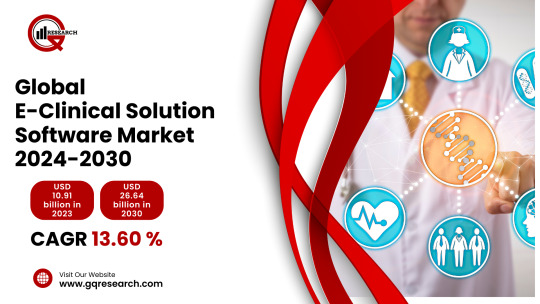
Projected Growth: Projections suggest that the E-Clinical Solution Software market will continue its upward trajectory, with a projected value of US$ 26.64 billion by 2030. This growth is expected to be driven by technological advancements, increasing consumer demand, and expanding application areas.
Compound Annual Growth Rate (CAGR): The forecast period anticipates a Compound Annual Growth Rate (CAGR) of 13.60%, reflecting a steady and robust growth rate for the E-Clinical Solution Software market over the coming years.
Technology Adoption:
In the E-Clinical Solution Software market, technology adoption is shaped by the diverse range of applications these solutions offer. E-Clinical solutions encompass a variety of software applications designed to streamline and enhance various aspects of clinical trials and healthcare research. These applications include electronic data capture (EDC) systems, clinical trial management systems (CTMS), electronic patient-reported outcomes (ePRO) tools, and electronic clinical outcome assessment (eCOA) platforms, among others. The adoption of technology in this market is driven by its ability to improve efficiency, accuracy, and compliance throughout the clinical trial process, ultimately accelerating the development of new medical treatments and therapies.
Consumer Preferences:
Consumer preferences in the E-Clinical Solution Software market are influenced by several key factors. Healthcare organizations, pharmaceutical companies, contract research organizations (CROs), and academic institutions, among others, are the primary consumers of these solutions. Their preferences are guided by the need for user-friendly interfaces, robust functionality, seamless integration with existing systems, and regulatory compliance. Additionally, factors such as data security, scalability, and support for mobile devices may also influence purchasing decisions. Ultimately, consumers seek E-Clinical solutions that not only meet their specific requirements but also enhance overall efficiency and data quality in clinical trials and research studies.
Technological Advancements:
Technological advancements play a significant role in driving innovation and evolution within the E-Clinical Solution Software market. Emerging technologies such as artificial intelligence (AI), machine learning, blockchain, and cloud computing are being increasingly integrated into E-Clinical solutions to enhance data analysis, improve decision-making processes, and optimize trial operations. For example, AI algorithms can analyze large datasets to identify patterns and insights, while blockchain technology can ensure the integrity and security of clinical trial data. These advancements enable greater automation, efficiency, and transparency in clinical research, paving the way for more effective and reliable healthcare interventions.
Market Competition:
Competition in the E-Clinical Solution Software market is intense, with numerous vendors vying for market share and industry leadership. Established players, as well as niche providers and startups, compete to offer comprehensive and innovative solutions that address the diverse needs of healthcare organizations and research institutions. Competitive factors include product features, pricing, reliability, customer support, and regulatory compliance. Strategic partnerships, mergers, and acquisitions are common strategies employed by companies to expand their market presence, enhance their product portfolios, and gain a competitive edge in this rapidly evolving market landscape.
Environmental Considerations:
Environmental considerations are becoming increasingly relevant in the E-Clinical Solution Software market, albeit indirectly. While the focus of this market is primarily on improving clinical trial efficiency, data quality, and patient outcomes, there is growing recognition of the environmental impact of healthcare practices, including clinical research activities. Efforts to digitize and streamline clinical trial processes through E-Clinical solutions can contribute to reducing paper usage, minimizing waste, and lowering energy consumption associated with traditional paper-based methods. Additionally, the use of cloud-based technologies in E-Clinical solutions can support remote collaboration and reduce the need for physical infrastructure, further aligning with environmental sustainability goals.
Regional Dynamics: Different regions may exhibit varying growth rates and adoption patterns influenced by factors such as consumer preferences, technological infrastructure and regulatory frameworks.
Key players in the industry include:
Oracle Corporation
Medidata Solutions
ERT
Parexel International Corporation
Bioclinica
IBM Corporation
Datatrak International, Inc
CRF Health
Merge Healthcare Solutions Inc.
Anju Software
The research report provides a comprehensive analysis of the E-Clinical Solution Software market, offering insights into current trends, market dynamics and future prospects. It explores key factors driving growth, challenges faced by the industry, and potential opportunities for market players.
For more information and to access a complimentary sample report, visit Link to Sample Report: https://gqresearch.com/request-sample/global-e-clinical-solution-software-market/
About GQ Research:
GQ Research is a company that is creating cutting edge, futuristic and informative reports in many different areas. Some of the most common areas where we generate reports are industry reports, country reports, company reports and everything in between.
Contact:
Jessica Joyal
+1 (614) 602 2897 | +919284395731
Website - https://gqresearch.com/
0 notes
Photo

Welcome to #cannabis #street #hemp #chanvre. The French Council of State lifts the ban on the sale of CBD flowers in France. Professionals in the sector had obtained in January the temporary suspension of a government decree prohibiting the marketing of hemp flowers loaded with cannabidiol, the non-psychotropic molecule of cannabis. #production #lifescience #biopharma #pharmatech #agrobusiness #pharma (à Fougères) https://www.instagram.com/p/CmypVRBL9C2/?igshid=NGJjMDIxMWI=
0 notes
Text
Solid-State Characterization (FAST)
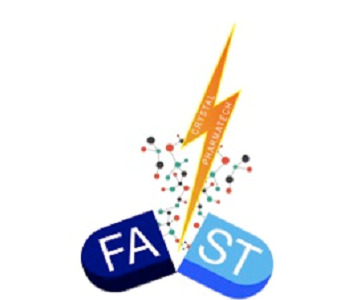
Solid-State Characterization (FAST)
The active pharmaceutical ingredient(API)'s solid form has a significant impact on the entire lifecycle of drug development. Different solid forms show significantly different physicochemical properties that will impact the performance of drug substances.
Solid State Characterization (FAST)
Our Solid State Characterization Service, which is referred to as Focused Analytical Solids Testing (FAST), covers many routine analyses encountered during pharmaceutical development. The FAST concept is directly aligned with our goal of partnering with organizations instead of merely providing data.
Every FAST result will be accompanied with interpretation that is aimed at solving your specific development needs. We also promise FAST lives up to its' acronym with our timing and quality guarantee.
We're not happy unless you're happy. With FAST, you can have the solid state characterization lab you've always wanted in-house.
0 notes
Photo

2. Supportive and Robust Regulatory Environment
It is imperative for the government to continue ensuring transparency and put together an easy-to-understand and coherent regulatory policy that will eliminate ambiguity and uncertainty with regard to the process of pricing and approval of drugs. It must also refrain from repeatedly making changes and revisions to the policy but rather put together a framework that supports periodical review. This will build trust with the government and remove confusion within the pharma industry. THE ACCELERATED GROWTH OF PHARMATECH IN INDIA
Currently ranked third in the production volume of pharmaceuticals, India is the largest provider of generic drugs and affordable vaccines, globally. Over the last nine years, it has grown at a CAGR of 9.43%, with its major segments thriving. Generic and bulk drugs, over-the-counter medications, vaccines, contract research and manufacturing, biosimilars, and biologics are some of the top segments of the industry.
India stands tall and holds a position of authority – with over 3000 drug companies and more than 10,500 manufacturing units, a giant ‘pool’ of talent (scientists and engineers) on track to elevate the industry to greater heights.

Technology in Pharma
Post the Covid19 pandemic, the pharma industry responded by accelerating innovation, technology, and research and development to offer better products at even more competitive rates. The government’s latest Research-linked Incentive Scheme or RLI will benefit the industry from an increase in tax incentives in the R&D realm, enabling these companies to increase their spending on R&D, which would lead to a giant leap in the areas of complex generic drugs, precision drugs, antimicrobials, vaccines, and biosimilars. This has encouraged a rise in technologies such as 3D printing of precision medicine, which is poised to revolutionize medicine in a number of ways. 3D printing also prevents wastage and helps to enhance sustainability.
Errors in manufacturing in the pharmaceutical industry would not only be expensive but also life-threatening to consumers. The FDA has set down rules such as the Current Good Manufacturing Practices (cGMP) – which focuses on the design and the stringent monitoring of manufacturing processes and facilities.
Transformation of the digital landscape is critical from the perspective of improving patient care, reducing costs, more efficient manufacturing, and bringing in more transparency. These technologies include artificial intelligence (AI), augmented reality (AR), machine learning (ML), and additive manufacturing. These technologies enable elevated research and development, faster clinical trials, more creativity and uniqueness in products and services, and increased efficiency in manufacturing while remaining compliant.
Pharma Technology: Use cases

Outpatient and retail pharmacies would be able to enhance and accelerate their operations, as also elevate compliance, clinical, regulatory, organisational, and financial results, with the help of technology.
Pharma technology enables higher efficiency and easy and safe access to confidential medical and patient information – such technology has helped to evolve the administering, supply, and regulation of medicines. Pharmatech is at the heart of changing the way the industry works – storing, managing, and sharing patient data digitally is eliminating the need for paper records.
Pharmatech supports the following: e-prescriptions, immunization records, Bar code identification that reduces errors and time, telemedicine that delivers healthcare to the comfort of one’s home, 3D printing, Artificial intelligence that helps with facial recognition and instant messaging, the development of new medicines and vaccines, biochemical product development, and much more.
The Role of the Government

From the perspective of the government’s role in this realm, there are several aspects that the government can affect. The government must continue to strengthen the regulatory framework, incentivize investment for innovation by pharma companies, and create an ecosystem of collaboration between the industry, academia, and start-ups.
1. Strengthen the Infrastructure for Healthcare
By improving healthcare and strengthening the infrastructure, it would be simpler to enhance the usability of the available technologies such as telemedicine, artificial intelligence, healthcare apps, mobile clinics, and others. This would increase access and health coverage for a larger number of people, while also presenting an ocean of opportunities for both the health and pharma industries.
2. Supportive and Robust Regulatory Environment
It is imperative for the government to continue ensuring transparency and put together an easy-to-understand and coherent regulatory policy that will eliminate ambiguity and uncertainty with regard to the process of pricing and approval of drugs. It must also refrain from repeatedly making changes and revisions to the policy but rather put together a framework that supports periodical review. This will build trust with the government and remove confusion within the pharma industry.
3. An Independent Pharma Ministry
An independent ministry will speed up policy-making and decisions, ramp up the implementation process, expedite investment approvals, and support the continuous elevation of technology within the industry.
4. Focus on API Manufacturing
The Active Pharmaceutical Ingredient (API) is the biologically active component of a drug product (tablet, capsule, cream, injectable) that produces the intended effects. By providing infrastructure and regulatory support, the manufacturing of APIs in India can be enhanced, thereby reducing the reliance on these from other countries. Constructing large-scale dedicated zones, increasing pre-approval of environmental clearance, allowing existing facilities to support API manufacturing and a lower cost of borrowing to set up an API plant.
5. Promote and Support Innovation
The pharma industry would benefit by reducing the GST on all drugs – maintaining a uniform 5% - rather than just on the life-saving drugs, and competitive tax interventions especially those that support research and development, technology, and technology transfers. A streamlined policy that supports clinical trials for innovative products, better support for technology in established companies, health-tech start-ups, and an increase in investor-friendly business policies. Setting up of anchor educational institutions that support technological and other research and innovation. These institutions would not only initiate research but also be the prime ‘providers’ of skilled talent and collaboration on strategic initiatives.
6. Collaborate with International Regulatory Bodies
Such collaboration will help to expand and make a more robust global footprint, while also improving market presence through the exchange of best practices between regulatory bodies of several countries. Innovation and tech-led growth are possible only with support from the government, through regulatory interventions, investments, and consistent nurturing of technology. The current government schemes include an increase in budget by 18.6% over five years, the Ayushman Bharat Yojana (now called the Pradhan Mantri Jan Arogya Yojana, which plans to make secondary and tertiary healthcare completely cashless for the underprivileged section of society covering about 50 crore beneficiaries), and others.
The Lack Of Talent
While the pharma industry is currently worth trillions of dollars and has made significant advances in technology, there is still a long way to go. The IoT, artificial intelligence, robots, and sophisticated computers need to evolve even more and faster, and modern manufacturing technologies are still in the loop.
Investment and focus on pharma-tech can exponentially improve efficacy, effectiveness, agility, speed, adaptability, and uniformity in the output and performance of the pharma industry. Technology in the industry will define the next generation of products, while also raising quality, controls, and safety standards, which currently are managed manually!
However, since every process cannot be managed by ‘machines’, a smart combination of human and artificial intelligence is certainly the right choice.

According to the Economic survey of 2021, India’s domestic pharma market is likely to grow by 3X to reach a $130 Billion valuation by 2030. The demand for industry-ready talent has increased massively, and such exponential growth has only made the talent gap that much clearer.The country requires competent professionals such as pharmaceutical managers, engineers, clinical researchers, business analysts, pharmacovigilance experts, etc. to take charge of the revolution that is to come.
The sky is the limit for the pharma industry in a populous developing country like India- are you up for the challenge?

0 notes
Text
Indian Exporter of Fermenter and Bioreactor
Uma Pharmatech Machinery is One Of The Leading Manufacturer of Fermenter bioreactor and Indian Exporter. We are one Of The Pioneer Manufacturer Of Laboratory Bioreactor Supplier From India.
We Also Manufacture Pilot Scale Fermenter For Biotech Laboratory and Researcher and Trainer. We Provide Third Party Manufacturing For Biofertilizer and Biopesticides Manufacturing in India.
We Have Inhouse Manufacturing Laboratory For Loan License Manufacturing For Indian MSME.
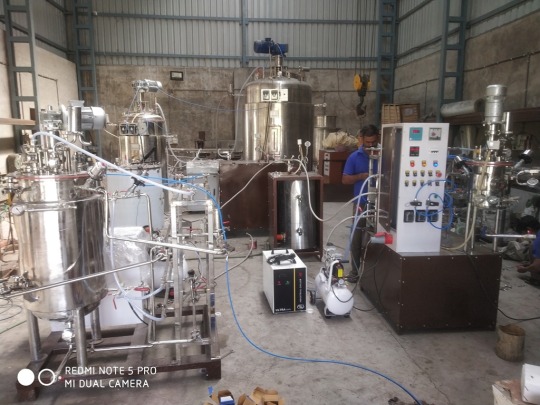
#fermenter supplyer#microbial fermentation#industrial fermenter#fermenter bioreactor biofermenter fermentation labfermenter laboratory fermenter ss bioreactor glass fermenter upm uma pharmatech machinery
2 notes
·
View notes
Text
Personalized Medicine and Data Analytics: Revolutionizing Pharma Commercialization
The pharmaceutical industry is undergoing a profound transformation with the advent of personalized medicine and the integration of data analytics. This convergence reshapes how drugs are developed, marketed, and delivered to patients, leading to a paradigm shift in pharma commercialization strategies. In this blog, we delve into the intersection of personalized medicine and data analytics, exploring how these two forces are revolutionizing how pharmaceutical products are being marketed.
Write to us at [email protected] to delve into the intersection of personalized medicine and data analytics, exploring how these two forces are revolutionizing how pharmaceutical products are being marketed.
Unleashing the Power of Personalized Medicine:
Personalized medicine, often called precision medicine, tailors medical treatment to the individual characteristics of each patient. This approach recognizes that patients have unique genetic, molecular, and clinical profiles influencing their treatment response. By leveraging advances in genomics and molecular diagnostics, pharmaceutical companies can identify patient subgroups more likely to respond positively to specific therapies.
The Role of Data Analytics:
Data analytics serves as the backbone of personalized medicine, enabling the extraction of meaningful insights from vast amounts of patient data. The data-driven approach encompasses a range of techniques, including machine learning and predictive modeling, to analyze patient genetics, biomarkers, medical histories, and even lifestyle data. These insights empower researchers and clinicians to make informed decisions about treatment plans, resulting in improved patient outcomes.
Revolutionizing Pharma Commercialization:
Targeted Marketing and Patient Engagement: Data analytics allows pharmaceutical companies to identify the patients most likely to benefit from their therapies. This enables highly targeted marketing efforts and personalized communication strategies. Companies can establish stronger connections and foster brand loyalty by engaging patients in a more tailored manner.
Optimized Clinical Trials: Personalized medicine calls for smaller, more focused clinical trials. Data analytics aids in patient selection, trial design, and endpoint determination, leading to quicker and more cost-effective trials. This accelerates the development process and speeds up time-to-market.
Healthcare Economics and Value Demonstration: Pharma companies can use data analytics to demonstrate the value of their personalized therapies to payers and healthcare providers. Companies can negotiate favorable reimbursement agreements by showcasing how these treatments improve patient outcomes and reduce healthcare costs.
Real-World Evidence Generation: Post-market surveillance and real-world evidence collection have become integral to personalized medicine commercialization. Data analytics enables the continuous monitoring of treatment outcomes and safety profiles in diverse patient populations, further validating the efficacy and safety of personalized therapies.
Supply Chain Optimization: Personalized medicine often involves manufacturing therapies for smaller patient populations. Data analytics can optimize supply chain management, reducing waste and ensuring the right treatments reach the right patients at the right time.
Challenges and Considerations:
Data Privacy and Security: Handling patient data requires stringent data protection measures to ensure privacy and compliance with regulations.
Ethical Considerations: Balancing the potential benefits of personalized medicine with ethical considerations about data use and patient consent is paramount.
Interoperability: Integrating disparate data sources, such as electronic health records and genetic data, presents technical challenges that must be addressed.
Conclusion:
The fusion of personalized medicine and data analytics is transforming the pharmaceutical landscape, from drug discovery to patient engagement. By harnessing the power of patient-specific insights and leveraging advanced analytics, pharma companies are revolutionizing their commercialization strategies. As this exciting journey continues, stakeholders must remain committed to responsible data use, patient privacy, and innovative approaches that improve patient care and outcomes.
Visit our website now: https://www.anervea.com/
#PersonalizedMedicine#DataAnalytics#PharmaCommercialization#HealthcareInnovation#PrecisionMedicine#DataDrivenHealthcare#PharmaTech#PatientCentric#HealthTech#MedicalInnovation#DataRevolution#TargetedTherapies#DataScience#MedTech#PharmaMarketing#IndividualizedTreatment#HealthcareAnalytics#CommercializationStrategies#PatientData#DrugDevelopment#DataInsights
0 notes
Text

Discover Quantum PharmaTech's efficient turnkey solutions for pharmaceutical turnkey projects. From inception to implementation, our comprehensive services ensure streamlined and cost-effective project execution. Explore our website to learn more about how we can optimize your pharmaceutical manufacturing process.
0 notes